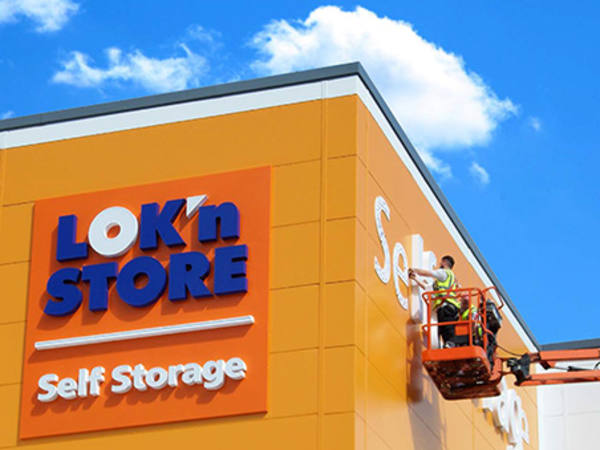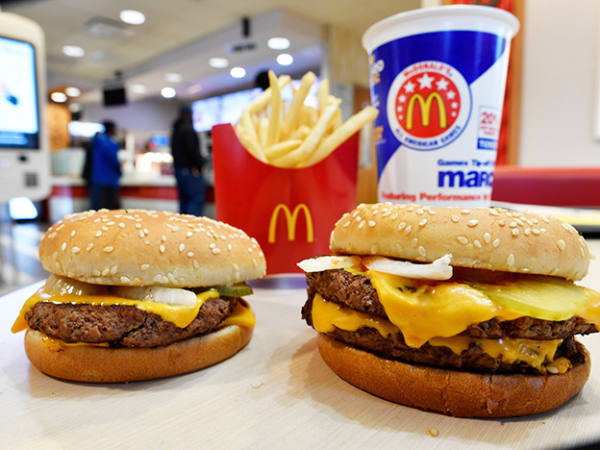- Tyson Foods sees margin boost from cost cuts
- Wendy's and McDonalds consider pricing and product changes
Fast food companies and their suppliers are looking for ways to boost profitability as a combination of bad weather, inflation and squeezed consumers are putting pressure on margins.
This goes beyond simple price rises, and extends down the supply chain: Last month, the US fast food restaurant Chick-Fil-A announced it was ditching its 'no antibiotics ever' promise. The company cited the diminishing chicken supply for its decision to adopt the looser industry standard of 'no antibiotics important to human medicine'.
Chick-Fil-A’s announcement followed America’s biggest poultry company Tyson Foods (US:TSN)'s decision last summer to end the same pledge, eight years after it first banned the use of antibiotics. At the time, Tyson said it was concerned about the rise of antibiotics-resistant infections in humans. Tyson supplies some of the world’s biggest fast-food restaurants and supermarkets, including McDonald’s (US:MCD), KFC and Walmart (US:WMT). Tyson straddles both the eat-at-home and restaurant sectors, so is insulated from the shift to more in-home dining in the US in reaction to higher living costs.
But it is still feeling the pressure. The antibiotics reversal came after Tyson had a disappointing third-quarter performance last year. Revenue dropped 2.6 per cent to $13.1bn, driven by a 3.5 per cent drop in chicken revenue. This, combined with the increased cost of feed, meant the chicken business swung from an operating profit of $277mn last year to a loss of $314mn. For the full year, chicken made an operating loss of $770mn, dragging the whole business to a loss of $395mn.
Although antibiotics don’t prevent viral avian flu, which has been the main chicken killer in the past few years, they do stop other bacterial diseases as well as promoting growth. “Data suggests the use of ionophores can lead to more uniform birds with consistent weight,” explained chief executive Donnie King last summer. “Meaning we can more accurately forecast supply and demand.”
This has also resulted in a cut to capital investment as Tyson doesn’t need as much redundancy in the supply chain to deal with surges or drops in production or demand. Correspondingly, the company announced it would be reducing both capital spending (capex) and working capital requirements to boost free cash flow.
This plan included closing four chicken facilities, in Arkansas, Indiana and Missouri. In the three months to December, capex dropped 40 per cent year on year to $354mn, meaning for the first time since June 2021 it didn’t exceed depreciation.
This drive for efficiency seems to be working so far. In the first quarter of this year, chicken revenue dropped 5 per cent but operating profit rose to $177mn, up more than 100 per cent year on year. When asked about consumer demand, King told analysts that the cheaper dark meat had been particularly popular recently. Both chicken volume and prices were down again, but slashed operating expenses meant chicken margins rose 2.8 percentage points to 4.4 per cent.
Wendy’s gets dynamic
Using antibiotics is not the only plan food companies have to boost profitability and maximise asset utility. In February, fast food restaurant franchise Wendy’s (US:WEN) chief executive Kirk Tanner said it was considering “dynamic pricing and daypart offerings, along with AI enabled menu changes”. In other words, prices will change depending on how busy the restaurant is. This dynamic pricing is expected to be employed next year.
This announcement received some backlash at the time. In response, Wendy’s said it never intended to increase prices but only to decrease them when the restaurant was less busy.
Wendy’s hasn’t enacted this policy in response to a poor set of results. Last year, revenue rose 4.1 per cent to $2.2bn while free cash flow was up 28 per cent to $274mn. Management expects revenue and cash flow to grow to $2.3bn and $280mn, respectively, next year.
However, Wendy’s has admitted that this year has started slowly, with first-quarter sales “slightly lower” due to adverse weather conditions. Management is happy to maintain its full-year growth guidance, but is expecting to catch up in the second half of the year, which is often a dangerous promise.
These problems haven’t been unique to Wendy’s. In January, same-store revenue at US quick-service restaurants was down 2.4 per cent year on year, driven by a reduction in traffic, according to data compiled by Jefferies. “Consumers typically spend on restaurants when they are feeling optimistic and have money available,” wrote analyst Saree Boroditsky. “Consumer confidence declined after three consecutive months of growth”. McDonalds' chief financial officer Ian Borden said last month that the world's top fast-food group was also struggling with consumers cutting spending. "You're starting to see food at home inflation versus food away from home getting back to its more, I think, historical dynamic, which means I think some of those consumers are just choosing to eat at home more often," he said. "[Lower income consumers] are expecting greater value for money than they have previously."
McDonalds' approach has been to wind back 'premium' offerings and instead aim for "large, more satiating" burgers, which would appeal on a value-for-money basis.
The US economy has held up in the face of gloomy expectations but there are cracks showing in the fast-food and meat industries. If US consumers are struggling at all, it is likely that these would be the areas where problems would start to emerge first.
Companies are looking for ways to mitigate these pressures. However, like antibiotics use, cutting capex helps in the short run, but down the road there is often an expensive price to pay.








